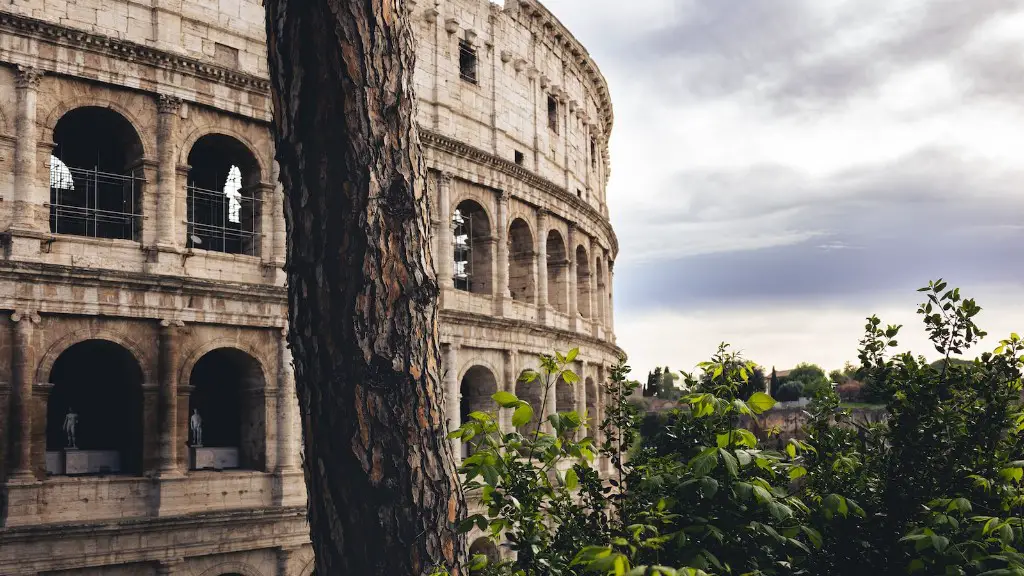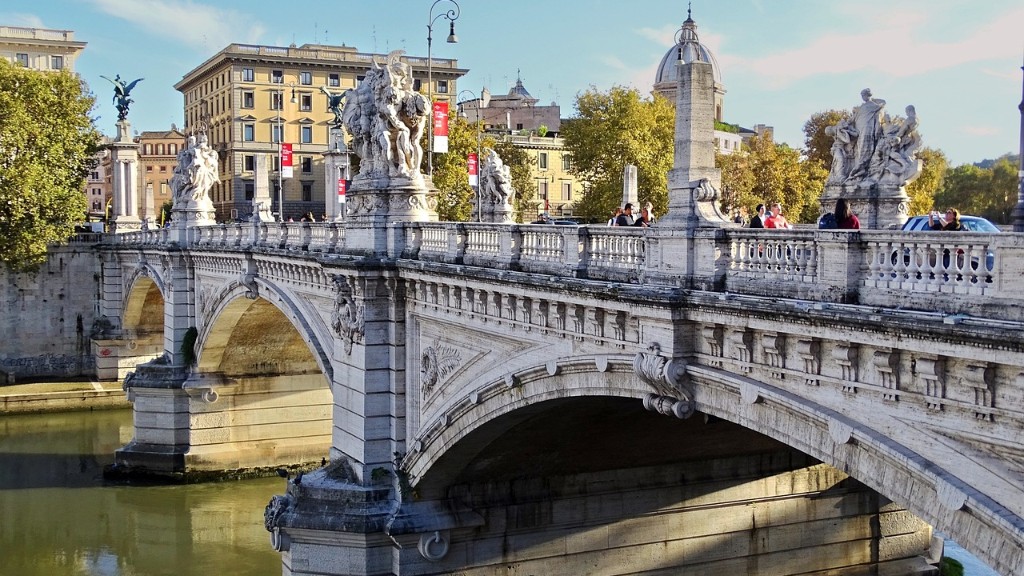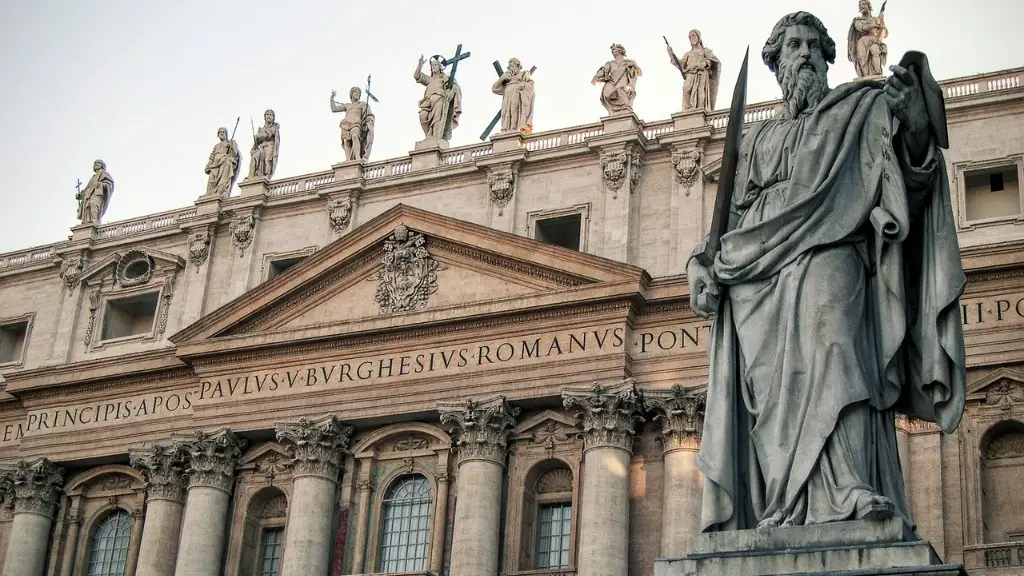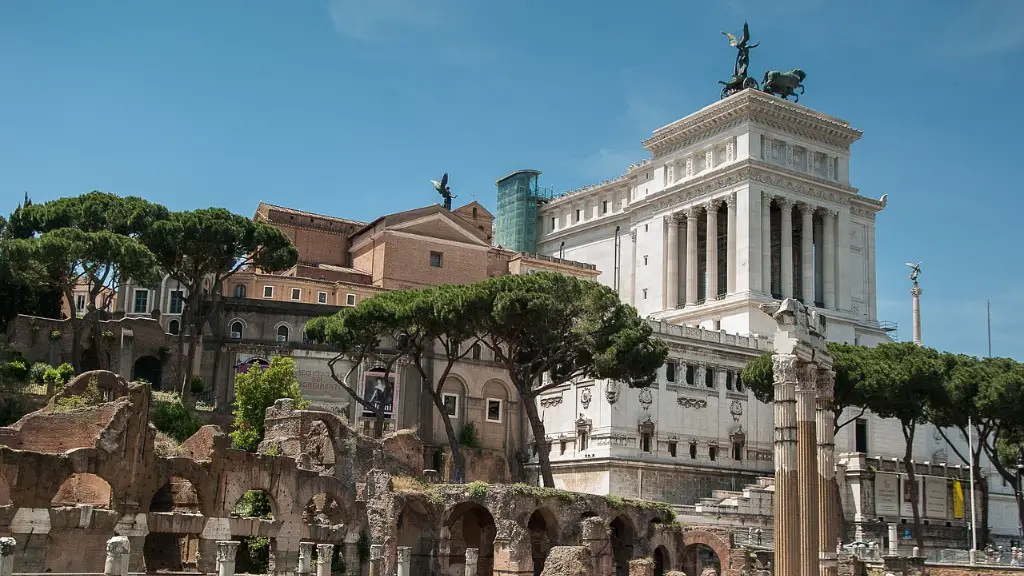At its peak, the Roman Empire was one of the most powerful empires in history. With its imperial art and propaganda, it established a sense of superiority and prestige among the people, which had a great influence on their culture. Art was a medium used in the Roman Empire to spread their political ideals and to maintain control of the population, and it had a significant impact on Roman society.
The Roman Government used art as a tool to promote its values and principles, and to control and keep the population in line. The Romans were quite active in creating propaganda, as they believed it to be a powerful way to spread their beliefs and to influence the thoughts and feelings of their subjects. They would often depict scenes from their mythology and from the conquest of Rome’s enemies on coins, sculptures and in painting to express their power and dominance. The use of propagandistic art was an important aspect of the Roman Government’s authority over the people.
The use of art as propaganda began with the Augustus Emperor, who was the first to officially order the creation of art to glorify the state and its achievements. Augustus and his successors used art to portray their vision of how the Roman Empire should be. In their paintings and sculptures, they depicted grand scenes of battle and victory, which would often be viewed by the public. These works of art would serve as a reminder to the citizens of Rome’s power and strength.
The art of ancient Rome was also used to propagate the religion and culture of the Empire. For example, the pagan Roman gods and goddesses, who were the center of Roman religion and culture, were often depicted in sculptures and paintings. In addition, the Roman pantheon – which included the gods and goddesses, who were believed to have the power to influence the Roman Empire – were also the subject of many works of art.
The creation of art in Ancient Rome had a great impact on the Roman Empire. Not only did it spread the Roman ideals and values, it also helped to create a sense of unity amongst its citizens. By having art that depicted all aspects of Rome, the people gained a sense of identity, which was important in maintaining their loyalty to the Empire.
The creation of propaganda art in Ancient Rome was a great example of how art could be used to promote an ideal or message to an audience. Its effectiveness can still be seen today, with the use of art in politics and advertising, as it has a powerful influence on the thoughts and feelings of the people.
Create Meaningful Art
The art created in Ancient Rome was not just used to glorify the state, but it was also a way for the artists to express their creativity. During this time, art was used as a form of communication, creating feelings and ideas that echoed throughout the Roman Empire. For example, works of art often held allegorical meanings which conveyed a message to their viewers. This type of art was called allegorical art, and it served to remind people of the values and beliefs of the Roman Empire. It was used as a way to educate the people on the morals and virtues that the Empire upholds, and to encourage them to think and act in a certain way.
The art of Ancient Rome also followed a certain set of rules. For example, the emperor was often depicted in a larger form than the other figures in the painting or sculpture, implying the power and dominance of the ruler. Similarly, the gods and goddesses were often depicted in larger form, as they were believed to be protectors of the state. This is why many of the works created during this era still have a great influence on the art that is created today.
Art also served to elevate the status of the ruling family. The Augustus family was often portrayed in scenes from ancient mythology, which was meant to show the power and grandeur of the family’s members. It was meant to establish a connection between the ruling family and the gods, showing that they were capable of influencing the Roman Empire.
The art created in Ancient Rome had a great influence on their culture, as it served to spread their political ideals, religion, and heritage. It also served to remind the people of their loyalty to the Empire and to reinforce the power and strength of the ruling family.
Observe the Use of Iconography
The use of iconography was also a common element of propaganda art in Ancient Rome. This was often used to represent and symbolise the values and beliefs of the state through symbols and images. The most common symbols that were used were the eagle and the wolf, which were symbols of the power and strength of the Roman Empire. Other symbols were also used that were specific to the beliefs and values of the state, such as the sign of the cross, which was used to represent the Christian faith.
The use of iconography also served to encourage the people to follow the values and beliefs of the Roman Empire. Many of the works of art would depict scenes of conquest and victory, which would serve as a reminder of Rome’s power, and of its past achievements. These works would be seen by the public, and serve as a reminder of Rome’s greatness, and what the people should strive for.
The use of iconography also helped to communicate certain concepts to the public. For example, in Ancient Rome, the use of the sign of the cross was used to express the idea of eternal life, while the eagle was used to represent strength and power. The use of symbols was a way to quickly and effectively communicate a message to the public.
The use of iconography was an important element of the art created in Ancient Rome, as it was used to spread the values and beliefs of the state to the people. It was also a way to remind them of their loyalty to the Empire and encourage them to follow its laws and regulations, as well as to have faith in the ruling family.
Rely on the Power of Persuasion
The art created in Ancient Rome was also used as a tool for persuasion. Persuasion through art was an effective way to bring people to the side of the state. For example, the works of art often depicted scenes of victory and conquest, which were meant to demonstrate the power and strength of the Roman Empire. These were often shown in a grand and impressive manner, as they were meant to demonstrate the grandeur and superiority of Rome.
The art created in Ancient Rome also played a part in convincing its citizens to follow their beliefs and values. The art would often depict symbols, scenes, and figures meant to represent the values and ideals of the state. For example, the figure of the Augustus family was often depicted in many of the paintings and sculptures, as it was meant to imply a sense of power and strength behind the family.
Persuasion through art was an important aspect of the art created in Ancient Rome, as it was used to influence the thoughts and feelings of the people. It was a way for the state to communicate its messages to the public and to encourage them to act in a certain way. As such, it was an important element of propaganda in the Roman Empire.
Spread the Inside Knowledge
The art created in Ancient Rome was also used to pass on knowledge and insight to its citizens. The works of art often contained allegorical and symbolic references which served as a way of communicating to the public the values and beliefs of the state. This was especially true of the depictions of the gods and goddesses, as they were often used to express moral lessons and ideas that were believed to be important for the citizens to follow.
The art of Ancient Rome also served to document the events of the Empire. Many of the works created during this time depicted scenes from battle and victory, which served to document the accomplishments of the Roman Emperors. These works were often seen by the public and served as a reminder of Rome’s greatness and the achievements of the ruling family.
The art of Ancient Rome played an important role in passing on knowledge and insight to its citizens. Not only did it depict the beliefs and values of the state, but it also served as a way to document the history and accomplishments of the Empire. As such, it was an effective way for the state to communicate its messages to the people.
Use Art as a Powerful Tool
Today, art is still being used as a powerful tool for persuasion, for communication, and for propaganda. Many countries use art to propagate their beliefs and ideals, to influence the population, and to encourage the citizens to follow certain laws and regulations. Even today, the power of art to influence and persuade is clear.
The art created in Ancient Rome was a perfect example of how art could be used as a powerful tool to propagate an ideal or message. Whether it was used to promote the state’s values or to document its history, the art created in Ancient Rome had a great impact on its society. The use of art as a tool for propaganda is still relevant today, and it shows how art and propaganda can be used to influence the thoughts and emotions of people.
The use of art as propaganda in Ancient Rome is a reminder of how powerful art can be. It can be used to propagate beliefs, to document history, and to spread messages. It can be used for persuasion, for communication, and for propaganda, and it is clear that art has a powerful influence on the people.





